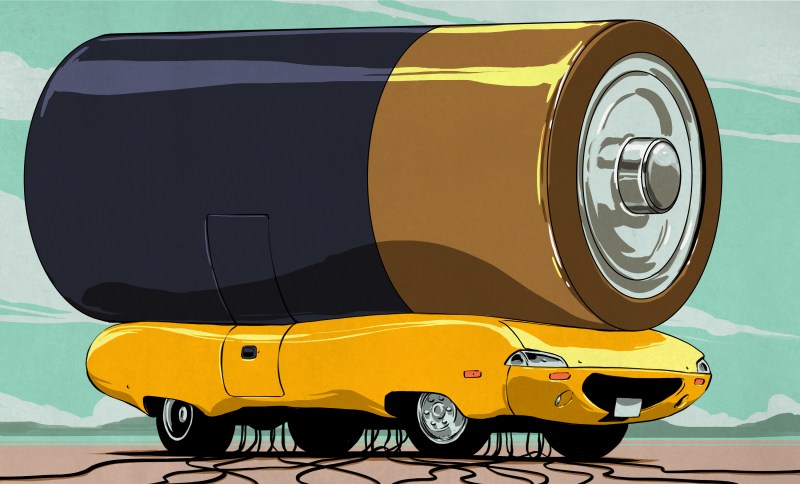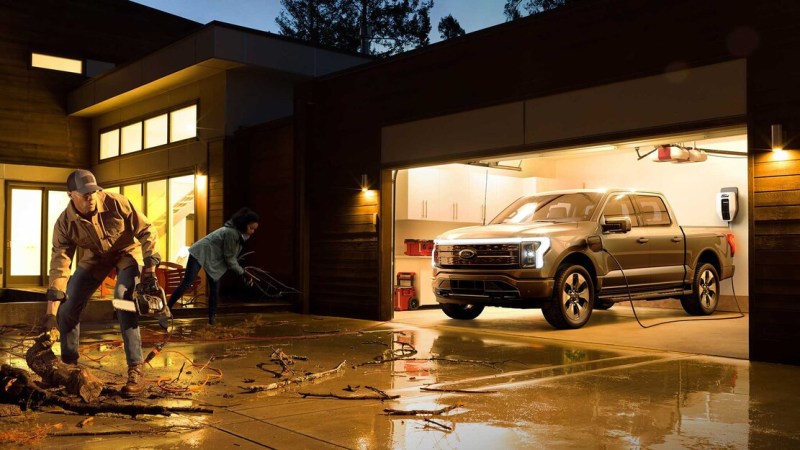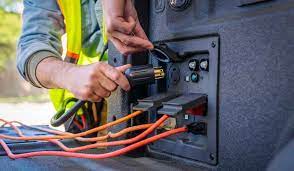THE ANONYMOUS

As nation states grapple with the spectre of environmental and economic losses due to climate change, we’ve seen an ever greater push towards renewable energy sources to replace heavier polluters like coal and natural gas. One key drawback of these sources has always been their intermittent availability, spurring interest in energy storage technologies that can operate at the grid level.
With the rise in distributed energy generation with options like home solar power, there’s been similar interest in the idea of distributed home battery storage. However, homeowners can be reluctant to make investments in expensive batteries that take years to pay themselves off in energy savings. But what if they had a giant battery already, just sitting outside in the driveway? Could electric vehicles become a useful source of grid power storage? As it turns out, Ford wants to make their electric trucks double as grid storage batteries for your home.
If You’ve Got A Big Battery, Why Not Use It?


The technology is based around the Ford Charge Station Pro, an 80 amp bidirectional charger for their new electric pickup, the F-150 Lightning. The charger allows the pickup’s battery to power a user’s home in the event of a blackout, for up to three days of typical use. It requires professional installation, and is outfitted with proper isolation safeguards to avoid backcharging the grid which can be dangerous for line workers undertaking repairs. It builds on the great press Ford received earlier this year during the Great Texas Blackout, when owners of F-150 Hybrids were able to keep appliances running for days thanks to the vehicle’s onboard battery, generators and inverters.
Beyond Emergencies
Where it gets really interesting is when Ford roll out their Intelligent Power upgrade for the system. This will use the pickup’s battery to supply energy to the home during peak periods when power prices are highest — such as during the afternoon or early evening. Then, it will charge the car back up at night when prices are lower. It essentially uses the vehicle as a home battery, akin to products like the Tesla Powerwall or homebrew batteries we’ve seen before. The functionality will only be available on the Ford Charge Station Pro, which will have the smarts to manage power flows both into and out of the grid. Users of more basic home charging solutions won’t be able to use the technology.

There’s no reason the system couldn’t monitor live power prices and compare with the car’s use schedules in order to charge at the cheapest possible time, while still maintaining the battery at a minimum charge level to avoid the user getting stuck without transport. Of course, to make the most of this capability, careful implementation will be key. It will only take a few horror stories of users waking up to a dead car battery, or dropping range over time, for public opinion to turn against the practice. Software must be optimised to always leave a driver with range in the battery when they need it, and to maximise the lifespan of the vehicle’s battery. Despite a decade of mainstream availability of electric cars, we haven’t heard too many horror stories of batteries dropping dead, but it remains a potent fear in the broader community.
The Smartest Electrical Gear in Your Home
The charger will require professional installation into a home’s electrical wiring. However, this is typical of most serious electric vehicle charging solutions. With drivers demanding more range per minute from their chargers, fast charger and 220V installations are becoming par for the course with electric vehicle purchases.
Storage will become increasingly important to healthy power grid operation over time as renewables start to make up a larger share of the overall power mix. Some jurisdictions have already faced issues as huge influxes of solar power on bright days make it difficult to keep traditional baseload generators online without overloading the grid. Having huge swathes of storage distributed across the grid could help with this. In the aforementioned scenario, electric cars attached to smart chargers would note the dropping power price as solar energy flooded in to the grid on a sunny day, and switch into charging mode to store the cheap energy. If the sun temporarily goes behind a cloud, rather than the grid voltage crashing, smart chargers could detect the dip and instantaneously respond by letting battery power flow back into the grid. It’s similar to the operation of large grid battery projects like the Hornsdale Power Reserve, only distributed across thousands of individual homes.
The benefit of using EVs for grid storage is that those who buy compatible electric vehicles don’t just get a car that’s cheaper to run and kinder to the environment. They can also play an active role in maintaining grid stability and making the most out of the renewable energy available on Earth every day. With thousands of EVs purchased every year, if properly equipped, they could become the grid storage revolution that the world has been looking for.
from Hackaday https://ift.tt/3inBdG7
No comments: